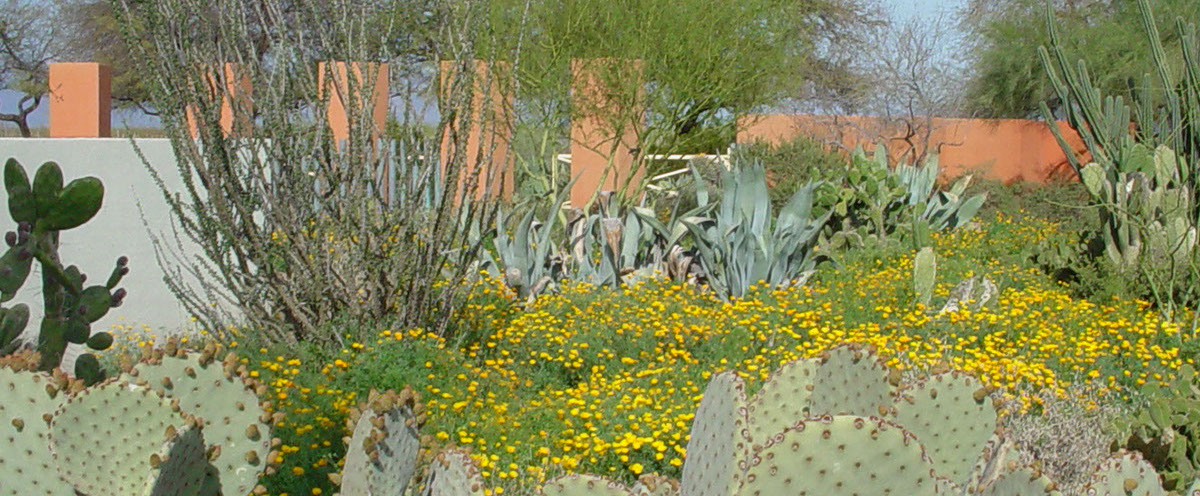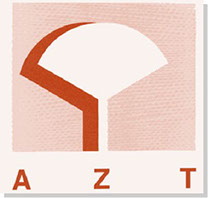


Alternative Planting Methods
Many horticultural problems that can shorten the life of desert trees begin when trees are transplanted or installed. Promoting a dispersed root system is central to the successful establishment and long term vigor of all desert plants. Tree rooting can be influenced by planting methods, the quality and quantity of viable roots at the time of transplanting and the characteristics of the soil where the tree is being planted. As discussed previously (Arid Zone Times 1-2-94), questions about the size, shape and depth of the planting hole, the need for organic amendments in the back fill and the value of post-transplant pruning have long been debated by landscape professionals. Traditional planting methods require a hole dug slightly larger and deeper than the dimensions of the box size being planted. This method does not guarantee effective rooting, can expose the trunk to soil-borne diseases if the tree sinks or settles lower than the soil line and can limit the availability of oxygen in root zone. An alternative being studied is to excavate a planting hole that with rough, uneven sides and bottom, with the hole no deeper than the height of the root-ball and 3 to 5 times as wide as the root ball. Recall that the majority of active tree roots are found within the top couple of feet of soil. The rough sides of the planting hole foster a better interface between back-fill and existing soil and improves lateral root development. This wider excavation combined with loose incorporation of the native backfill soil allows for quicker and broader water penetration making it easier for new roots to grow and spread.
Numerous studies have shown that back-fill used in transplanting desert trees should not be amended with organic matter. Desert trees species are well adapted to soils with little organic matter (generally less than 1% by weight). Excess organic matter can slow water penetration and encourage water-saturated soils that act to suppress the development of new roots. Organic matter in the backfill can also prevent roots from penetrating into surrounding native soil. Where needed sand can be added to the back-fill to increase water penetration in heavier soils. The development of new roots is stimulated by and dependent upon the growth of new leaves and stems. Pruning immediately following planting reduces the trees ability to photosynthesize and only serves to reduce new root, stem and leaf growth and can delay tree establishment. Such pruning is considered unnecessary and potentially detrimental. Prune only broken or damaged limbs. Staking should be used sparingly and only for a short time. Staking can provided wind stability for the trunk and root-ball and help promote effective root establishment. Tree stakes must be removed so trunks can develop proper caliper and taper.
Plant roots only explore moist soils. The depth and distribution of irrigation water will dictate the depth and distribution of plant roots. A single, point source of water, like that delivered by a drip emitter, produces a cone-shaped profile of wet soil with the point of the cone (or smallest part of the profile) being directly beneath the emitter. The distribution of emitters then will dictate the distribution of water and directly influence rooting. The design and installation of traditional irrigation systems has favored economics over horticultural considerations. It is obvious that as the tree grows the irrigation system should be expanded to deliver water over a larger area. Limited numbers of immovable emitters produce a physically restricted root system and tends to keep the soil near the trunk water saturated during and immediately following irrigations. These two conditions can make trees more prone to wind throw.
Ways to limit the risk of wind throw of established trees include: drier soil adjacent to the trunk (as the tree matures); pruning 20% of stems and leaves per tree trimming and appropriate staking and timely stake removal. Juan Barba, a Tucson area Certified Arborist, has proposed alternative designs for tree irrigation systems that better accommodate tree and root growth. One method is to install concentric rings (see diagram) of emitters that extend out to the drip line of the tree. Such an arrangement would distribute water over a much larger area and result in a more highly dispersed root system. A second alternative would be to arrange numerous emitters to an X pattern (see diagram) rather than the rings. Both options increase the initial cost of installation but could pay long term dividends as trees mature. Not all planting locations can accommodate some of the alternative planting methods discussed. Nor are all these methods currently cost effective. Desert adapted plants and arid landscape designs present new and unique challenges to conventional horticultural methods. Landscape professionals should play a role in addressing these challenges, be willing to experiment and remain receptive to innovative alternatives.

© Copyright 2000-2020 Arid Zone Trees